Estimated reading time: 15 minutes
Are you looking to give your furry friend a makeover but don’t know where to start? Grooming dogs is more than just maintaining their appearance, it’s also about keeping them healthy and comfortable.
This comprehensive guide is perfect for dog owners looking for advice on how to groom a dog at home. You will find step-by-step instructions and grooming tips for every task from brushing your dog’s coat, trimming their nails, bathing, and even dental care.
Key Takeaways
- Understand your dog’s grooming needs by identifying their coat type and the frequency of brushing and bathing required.
- Prepare your dog for grooming by choosing a calm location, introducing them to the grooming tools, and starting slow with short strokes.
- Regularly brush and comb your dog’s coat to prevent tangles and mats, using the appropriate tools for their specific coat type.
- When bathing your dog, use a dog-friendly shampoo and conditioner, rinse thoroughly, and avoid using a hairdryer. Towel dry or let them air dry naturally.
- Trim your dog’s fur and nails carefully using the right tools, taking it slow if they are not used to it. Watch out for signs of discomfort or stress.
- Clean your dog’s ears, eyes, and teeth regularly using vet-approved products. Be gentle when handling sensitive areas like ears and eyes.
- Learn how to express anal glands properly or seek professional help if needed.
- Be patient during grooming sessions, use positive reinforcement like treats to create a positive association with grooming.
- Take extra care when dealing with sensitive areas like ears, eyes, and paws to prevent injury or discomfort.
- Seek professional help if you’re unsure about certain aspects of at-home grooming or if your dog becomes stressed or anxious during the process.
Understanding your dog’s grooming needs
Different dog breeds have different grooming needs, including specific coat types and required grooming tools. It is essential to understand these needs and determine the frequency of brushing and bathing for your pet.
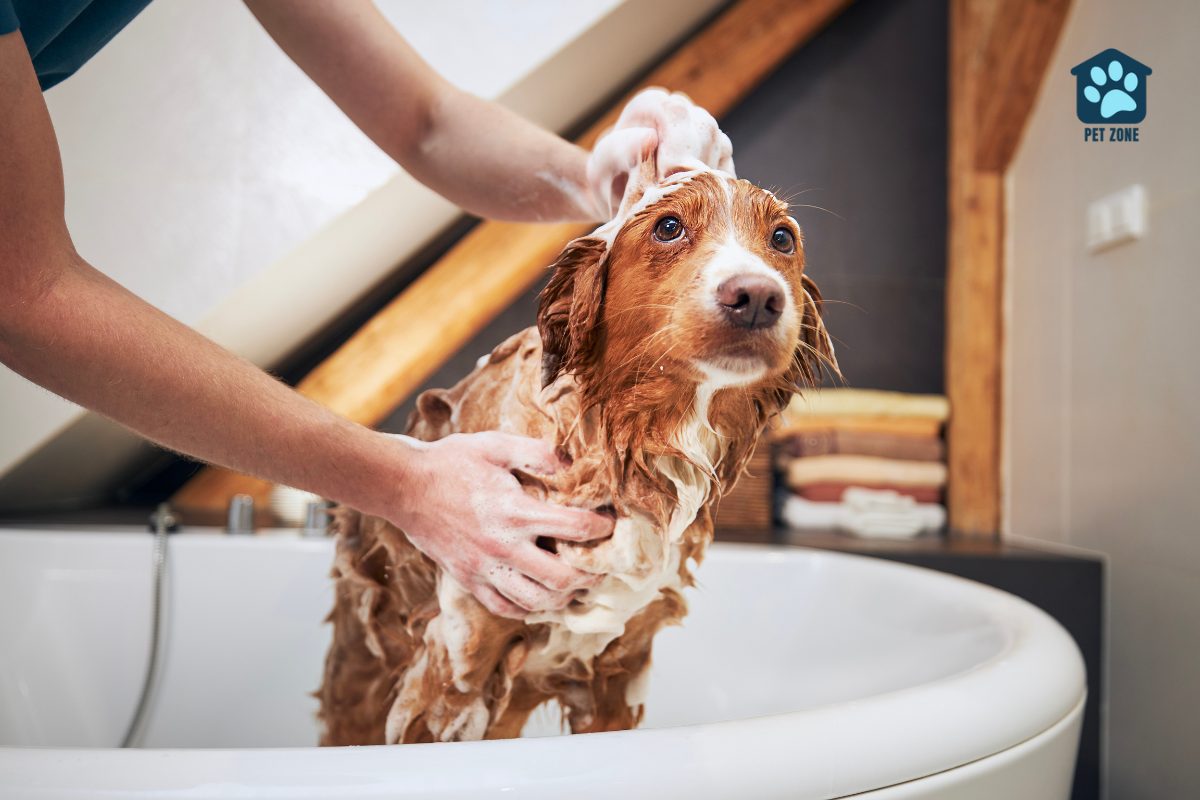
Different coat types and grooming tools needed
Your dog’s coat type tells what care it needs. Each type asks for different tools.
- Short-haired dogs have tight coats. Use a rubber-bristle brush or grooming glove on them.
- Short, thick coats need more care. Use a slicker brush to pull out loose hair.
- Long, silky coats are usually on breeds like Yorkies and Afghan Hounds. A wire pin brush or comb can keep the coat smooth and clean.
- Curly and wavy coated dogs need de-shedding tools and slicker brushes to prevent mats.
- Double-coated dogs have a top coat and an undercoat, like Siberian Huskies. A rake is needed to prevent tangling and matting.
Frequency of brushing and bathing
You need to brush your dog a lot. If you can, do it every day. This keeps your dog neat and clean. Some dogs with longer hair may need help from a groomer. They should go every 4-6 weeks. Dogs with short hair can go less often, like every 8-12 weeks.
Giving your dog a bath is also good for them. Regular baths keep their coat clean and healthy. Most dogs should get this done every six to eight weeks by a groomer or at home.
Steps to Groom Your Dog at Home
Preparing your dog for grooming
Getting your dog ready for the grooming process is vital. Here are some steps you should follow:
- Pick a calm and well-lit place to groom your dog.
- Let your dog sniff and check out the grooming tools. This helps build trust.
- Watch some videos from good groomers before you start.
- Start slow with short, light strokes of the brush.
- Brush down to the skin to help get rid of any tangles or mats in the fur.
- Use treats as rewards to make your dog feel happy and relaxed during this time.
- Stay patient with your dog as it may take time for them to get used to being groomed.
- Keep all needed tools close by so you don’t have to step away in the middle of grooming.
Brushing and combing
Regular brushing and combing is crucial for keeping your dog’s coat healthy and free from tangles and mats. Here are some important steps to follow when brushing and combing your dog:
- Start by choosing the right brush or comb for your dog’s coat type. For short-haired dogs, use a bristle brush or a grooming glove. For long-haired dogs, use a slicker brush or a pin brush.
- Begin by gently brushing your dog’s coat in the direction of hair growth. This helps remove any loose fur and prevents tangles.
- Pay special attention to areas where tangles and mats commonly occur, such as behind the ears, under the armpits, and around the tail.
- If you come across any tangles or mats, use a detangling spray or conditioner to make them easier to remove.
- Use a comb to carefully work through any remaining tangles or mats. Start at the ends of the hair and work your way up towards the roots.
- Be gentle and patient while brushing and combing your dog’s coat to avoid causing any discomfort or pain.
- Remember to praise and reward your dog throughout the grooming process to make it an enjoyable experience.
Bathing and drying
Bathing and drying your dog is an important part of their grooming routine. Here are some tips to help you with this process:
- Use a dog-friendly shampoo and conditioner to wash your dog’s coat.
- Wet your dog thoroughly before applying the shampoo.
- Gently massage the shampoo into their fur, being careful around their eyes and ears.
- Rinse your dog thoroughly to remove all the shampoo from their coat.
- Avoid using a hairdryer to dry your dog, as it can burn their skin. Instead, use a towel or let them air dry naturally.
- If you need to speed up the drying process, use a pet-specific hairdryer on the lowest heat setting.
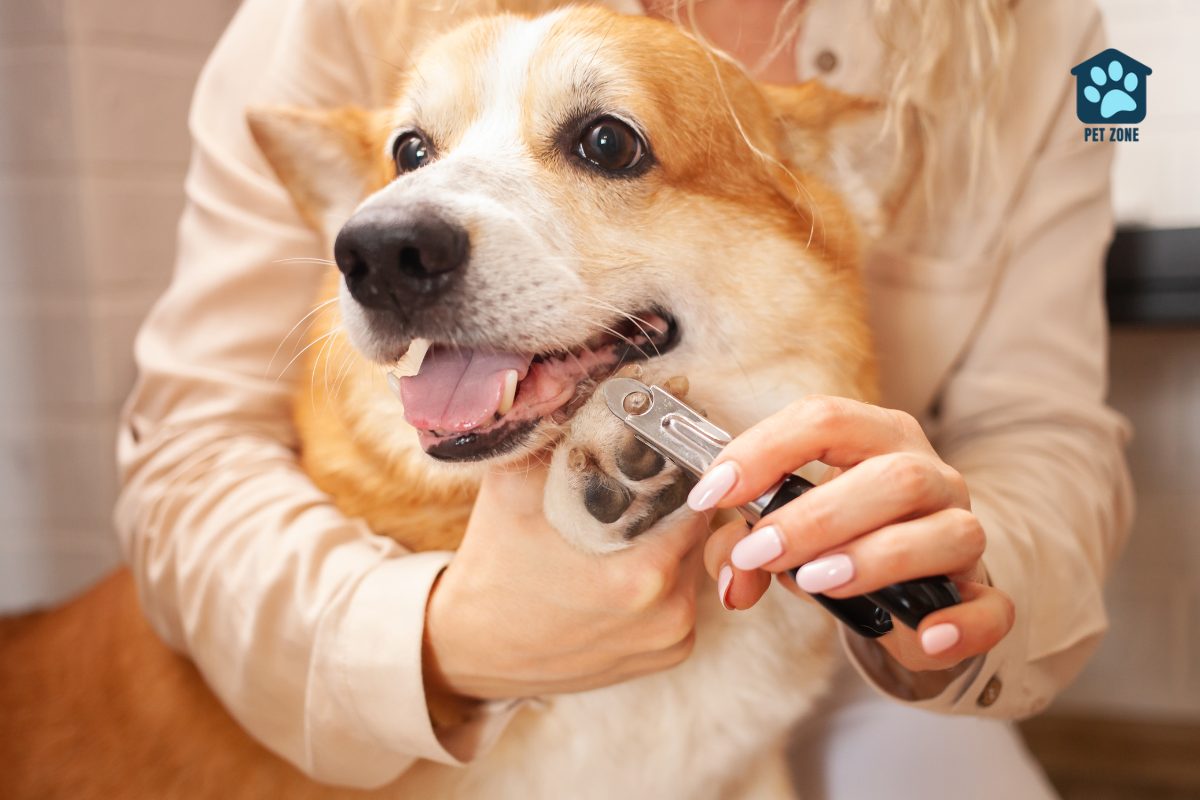
Trimming fur and nails
To keep your dog looking neat and healthy, it’s important to trim their fur and nails regularly. Here are some tips for trimming fur and nails:
- Use the right tools: Invest in a pair of dog nail clippers and scissors with rounded tips for trimming fur. This will help prevent any accidental injuries.
- Take it slow: Trim a little bit at a time, especially if your dog is not used to having their fur or nails trimmed. Gradually increase the amount you trim as they become more comfortable.
- Be mindful of the quick: The quick is the sensitive area inside your dog’s nail that contains blood vessels and nerves. Avoid cutting too close to it, as this can cause pain and bleeding. If you’re unsure, consult with a professional groomer or veterinarian.
- Reward good behavior: Give your dog treats and praise during the grooming process to make it a positive experience for them. This will help them associate grooming with something enjoyable.
- Keep an eye out for mats: Check your dog’s fur for any tangles or mats before trimming. Gently brush out any knots before using scissors to trim the fur evenly.
- Watch for signs of discomfort: Pay attention to your dog’s body language during grooming. If they show signs of stress or discomfort, take a break and try again later or seek professional help if necessary.
Cleaning ears, eyes, and teeth
To keep your dog healthy and happy, it’s important to clean their ears, eyes, and teeth regularly. Here are some steps you can take:
- Ears:
- Use a vet-approved ear cleaning solution.
- Gently lift the ear flap and fill the ear canal with the cleaning solution.
- Massage the base of the ear to distribute the solution.
- Wipe away dirt and excess solution with a cotton ball or soft cloth.
- Eyes:
- Dampen a cloth or cotton ball with warm water.
- Gently wipe away any discharge from the corners of the eyes.
- Be careful not to touch or irritate your dog’s eyeballs.
- Teeth:
- Use a dog-specific toothbrush and toothpaste.
- Start by introducing your dog to tooth brushing gradually.
- Apply a small amount of toothpaste to the brush and gently brush their teeth in circular motions.
- Focus on the outer surfaces of their teeth and pay attention to where plaque tends to build up.
Expressing anal glands
Expressing anal glands is an important part of your dog’s grooming routine. Here are some key points to remember:
- Manually expressing a dog’s anal glands can relieve discomfort and prevent infections.
- It involves squeezing the glands to release the fluid that has become clogged inside.
- If the anal glands are difficult to express or contain blood or pus, seek veterinary assistance.
- Have paper towels, disposable gloves, and tasty treats on hand for the process.
- Proper technique is crucial for safe and effective expression.
- Some groomers offer anal gland expression as part of their services, but make sure they do it correctly.
- There are natural methods and dietary changes that may help prevent full anal glands in dogs.
Tips and Warnings for Grooming Your Dog at Home
Be patient and use positive reinforcement during the grooming process to create a positive association for your dog. Be cautious when grooming sensitive areas such as ears, eyes, and nails to avoid injury or discomfort.
If you are unsure or uncomfortable with any aspect of at-home grooming, it is important to seek professional help to ensure the safety and well-being of your dog.
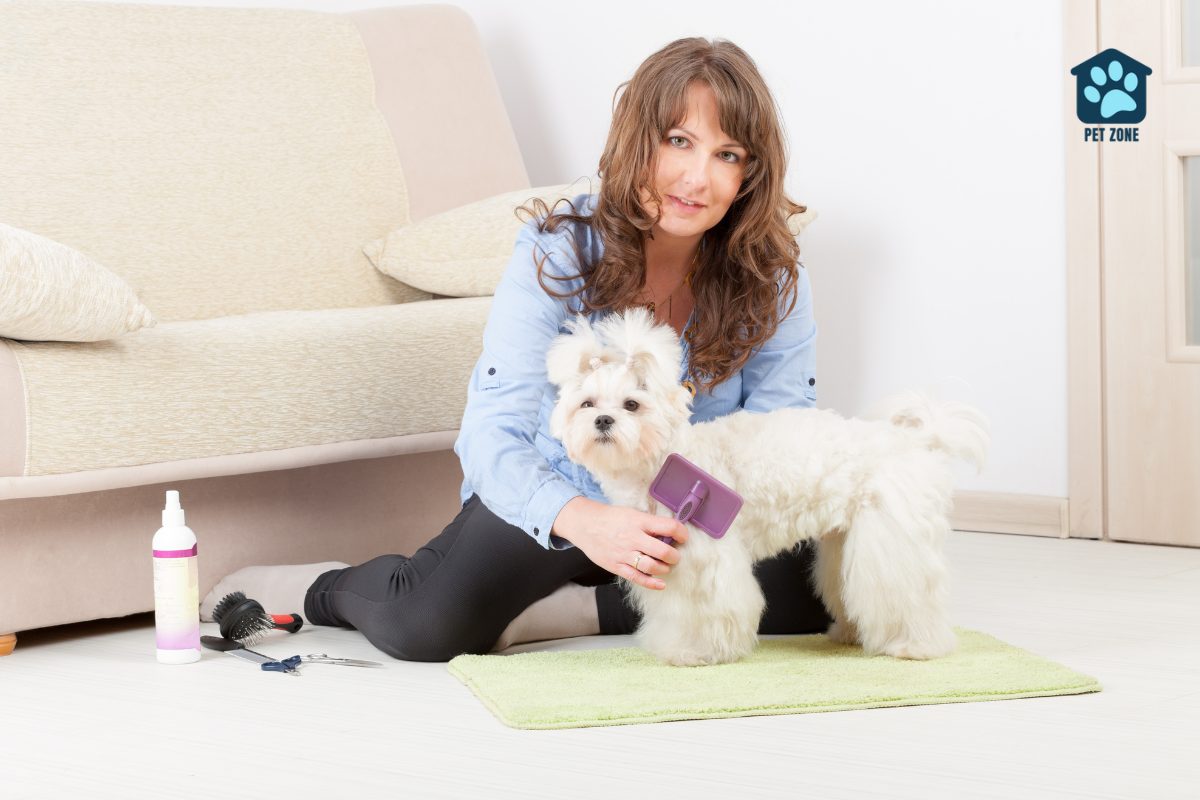
Patience and positive reinforcement
Grooming your dog at home requires patience and positive reinforcement. Dogs may not always feel comfortable during grooming, so it’s important to be patient with them. Avoid punishing or scaring your dog, as this can make the experience stressful for them.
Instead, use positive reinforcement such as treats and praise to reward good behavior during grooming sessions. This will help your dog associate grooming with positive experiences and make the process more enjoyable for both of you.
Remember, regular grooming is essential for your dog’s well-being and helps keep them healthy and looking their best.
Being careful with sensitive areas
When grooming your dog at home, it’s crucial to be extra cautious with sensitive areas like the ears, eyes, and paws. These areas are delicate and require gentle handling to avoid causing discomfort or injury to your furry friend.
Make sure to use appropriate tools specifically designed for these areas, such as ear cleaning solution and cotton balls for the ears, a moist cloth or wipes for the eyes, and nail clippers with rounded tips for trimming their nails.
If you’re uncertain about how to properly groom these sensitive areas, it’s best to seek professional help from a groomer who has the knowledge and experience in safely grooming them.
Avoiding injury or discomfort
To keep your dog safe and comfortable during grooming, there are a few important things to remember. First, don’t tether or tie your dog while grooming as this can lead to accidents.
Next, when trimming your dog’s nails, be careful not to guess where to cut. Improper nail trimming can cause pain and injuries. Instead, use proper nail clippers and take it slow.
Finally, if you’re unsure about how to groom certain areas or if your dog becomes stressed or anxious during the process, it’s best to seek professional help from a groomer who has experience in handling dogs safely.
Knowing when to seek professional help
If you’re grooming your dog at home, it’s important to know when to ask for help from a professional. Some dogs, especially those with long hair, may need professional grooming or more advanced techniques.
It’s also crucial to understand how to help your dog’s glands express themselves properly and seek guidance from a veterinarian if needed. There are risks involved in DIY dog grooming, so taking your dog to a professional groomer is recommended for certain situations.
Recommended Grooming Tools and Products for At-Home Dog Grooming
To groom your dog at home, you will need a few essential tools and products. These include brushes, combs, and grooming gloves for brushing out tangles and removing loose hair.
Shampoos and conditioners specifically designed for dogs are necessary for bathing, while wipes or waterless shampoos can be used for quick clean-ups between baths.
Nail trimmers with styptic powder are essential for safely trimming your dog’s nails. Ear and eye cleaning solutions help keep these areas free from dirt and debris. A toothbrush and toothpaste made specifically for dogs will aid in maintaining their oral hygiene.
Lastly, anal gland expression tools may be needed to address any issues related to the glands.
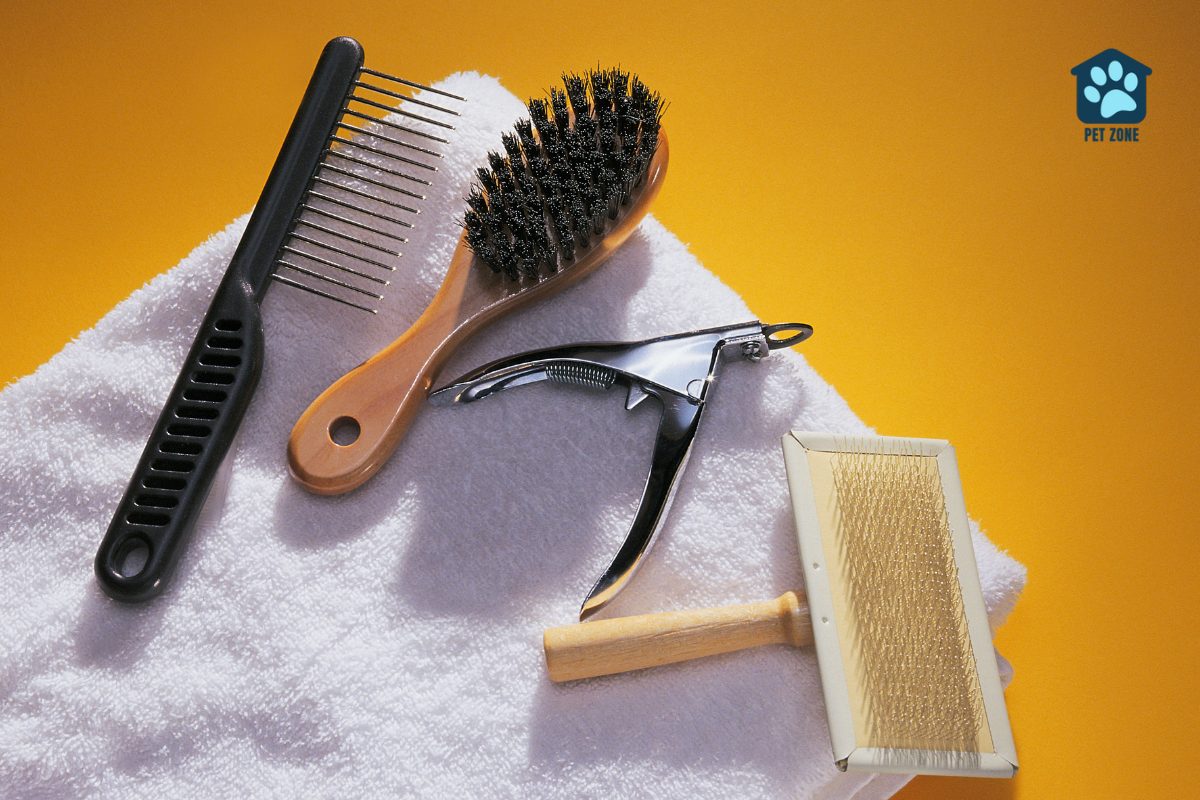
Brushes, combs, and grooming gloves
To groom your dog at home, you will need the right tools. Here are some brushes, combs, and grooming gloves that can help:
- Bristle Brush: This brush is great for dogs with short hair. It helps remove dirt and dead hair from their coat.
- Slicker Brush: If your dog has longer hair or a double coat, a slicker brush is recommended. It can detangle mats and remove loose fur.
- Metal Comb: A metal comb is useful for checking for tangles and removing any remaining knots after brushing.
- Rubber Friction Brush: This type of brush is gentle on your dog’s skin and can be used even on wet fur to remove loose hair.
- Shedding Comb with Blades: A shedding comb with blades is effective in reducing shedding by removing excess fur from your dog’s undercoat.
- Shedding Blade: Similar to the shedding comb, a shedding blade helps remove loose hair from your dog’s coat.
- Pin Brush: Ideal for dogs with long or curly hair, a pin brush can help keep their coat looking neat and tangle-free.
- Grooming Gloves: Grooming gloves are convenient for removing loose hair while petting your dog. They also help distribute natural oils in their coat.
Shampoos and conditioners
To keep your dog’s coat clean and healthy, it’s important to use the right shampoos and conditioners. Here are some tips:
- Use pet-specific shampoos: It’s best to use a dog shampoo, as human products can cause skin irritation. Look for shampoos that are gentle and formulated for your dog’s coat type.
- Consider aloe vera: Aloe vera is known for its soothing properties and can help calm any skin irritations or allergies. Look for shampoos that contain aloe vera as an ingredient.
- Conditioner for extra shine: Just like our hair, dogs can benefit from using conditioner too. Dog conditioners help to nourish the coat, leaving it soft and shiny. Choose a conditioner that is suitable for your dog’s coat type.
- Waterless shampoo in-between baths: If your dog needs a quick freshening up between baths, consider using waterless shampoo. These products can be sprayed onto the coat and then towel-dried, helping to remove dirt and odors.
Wipes and waterless shampoos
- Keep wipes and waterless shampoos on hand for quick and convenient pet grooming.
- Wipes are pre-moistened cloths that can be used to clean your dog’s fur, paws, and face without the need for water.
- Waterless shampoos are spray or foam products that can be applied directly to your dog’s coat and then brushed out, leaving them smelling fresh.
- Wipes and waterless shampoos are great for in-between baths or when you don’t have access to a bathtub or shower.
- They’re especially useful for dogs who dislike getting wet or are afraid of water.
- Some wipes and waterless shampoos are made with natural ingredients like aloe vera or oatmeal, which can soothe your dog’s skin.
- Make sure to choose wipes and shampoos specifically formulated for dogs, as human products may contain ingredients that could irritate their skin.
Nail trimmers and styptic powder
Nail trimmers and styptic powder are essential tools for at-home dog grooming.
- Nail trimmers should be used to carefully trim your dog’s nails. It is important to be cautious and avoid cutting too close to the quick (the sensitive part of the nail).
- In case a nail is cut too short and bleeding occurs, styptic powder can be applied to stop the bleeding.
- Styptic powder works by helping to clot the blood and prevent excessive bleeding. It is recommended to have this powder on hand during the grooming process.
- If you don’t have access to styptic powder, flour or cornstarch can also be used as alternatives to stop bleeding from a cut nail.
- You can easily find nail trimmers and styptic powder at most major pet stores or online retailers.
Ear and eye cleaning solutions
To keep your dog’s ears and eyes clean, here are some helpful solutions:
- For cleaning your dog’s ears, use a damp cloth or cotton swab soaked in mineral oil. Gently wipe the outer part of the ear to remove any dirt or debris. Avoid inserting anything into the ear canal, as it can cause injury.
- To clean your dog’s eyes, you can use a washcloth and warm water. Gently wipe around the eyes to remove any discharge, drool, or food debris. Be careful not to get any water or soap into your dog’s eyes.
- There are also specific products available for cleaning a dog’s face, including eye wipes and tear stain removers. These can help remove tear stains and keep the area around the eyes clean.
Toothbrush and toothpaste
To maintain your dog’s oral health and freshen their breath, it’s important to use the right toothbrush and toothpaste. Here are some key facts to know:
- Use toothbrushes and toothpaste designed specifically for dogs.
- Enzymatic dog toothpaste, like the poultry-flavored ones, is recommended.
- These special products help combat tooth decay, bad breath, and halitosis.
Anal gland expression tools
To properly groom your dog at home, you may need the following tools for expressing anal glands:
- Anal gland expression tool: This tool is designed specifically for safely squeezing a dog’s anal glands to release built-up fluid and material. It helps prevent discomfort and potential infections.
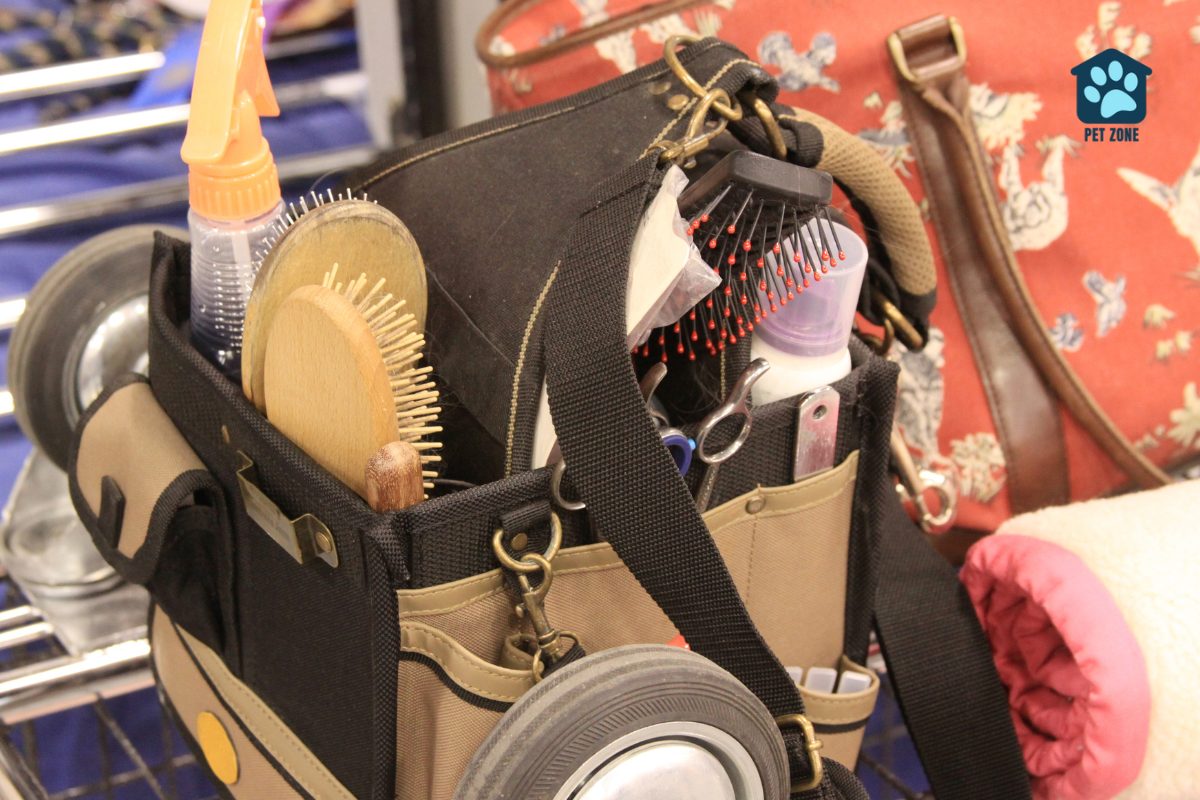
Conclusion
Grooming at home is a great way to keep your dog clean and healthy. By understanding their specific needs and following the proper steps, you can provide them with a comfortable grooming experience.
With the right tools and products, as well as patience and care, you can ensure that your furry friend looks and feels their best without having to visit a professional groomer. So go ahead and give it a try. Your dog will appreciate the love and attention!
As an Amazon Associate I earn from qualifying purchases.
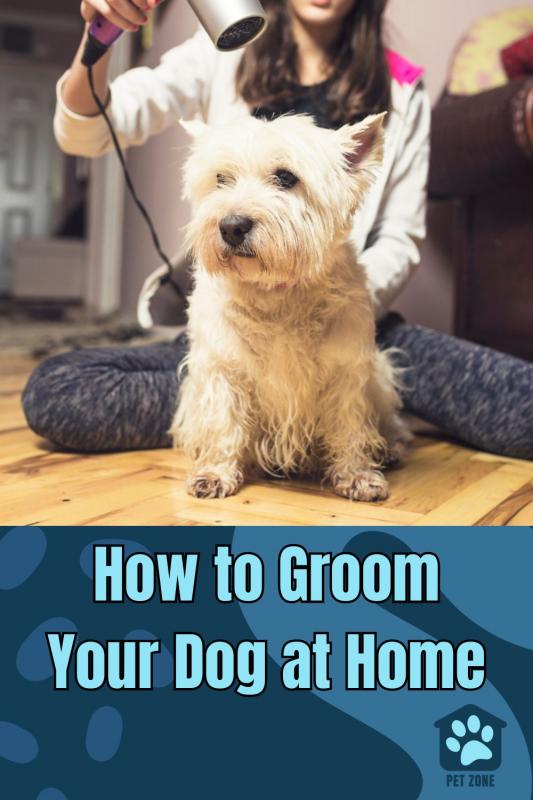


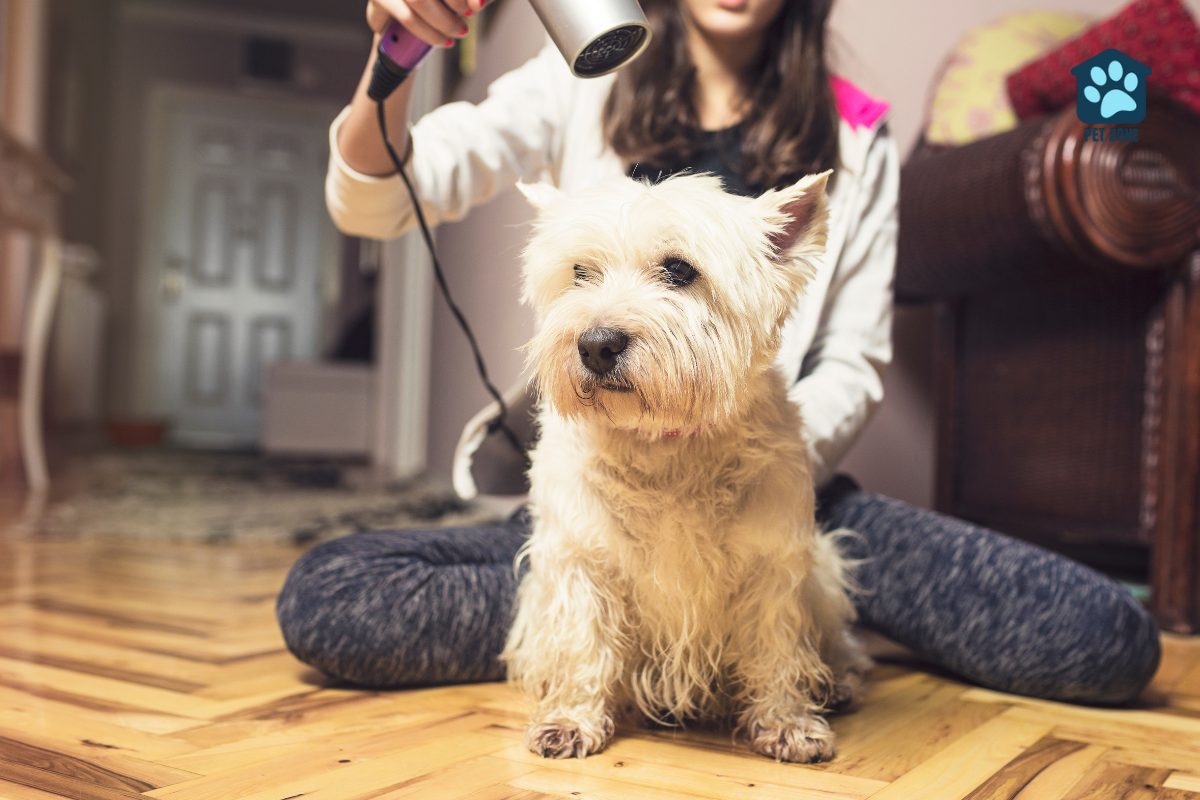
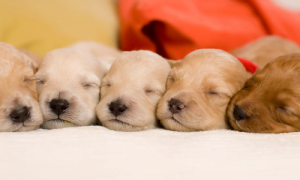
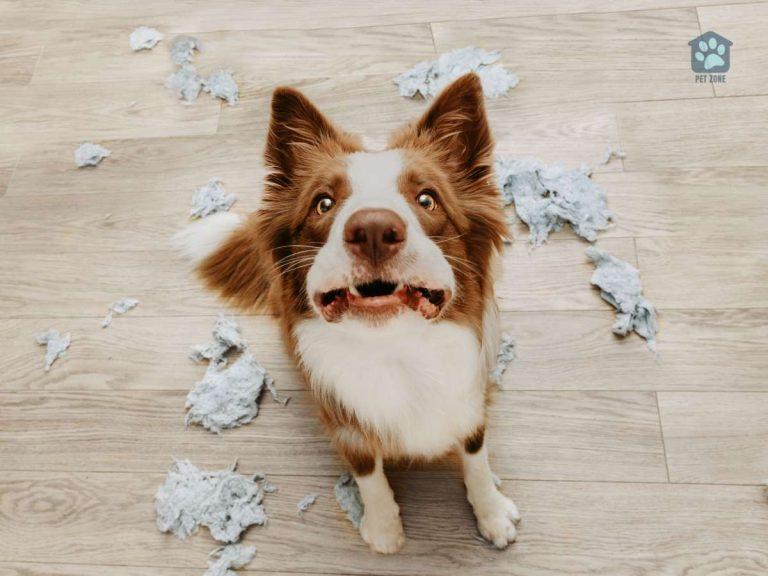
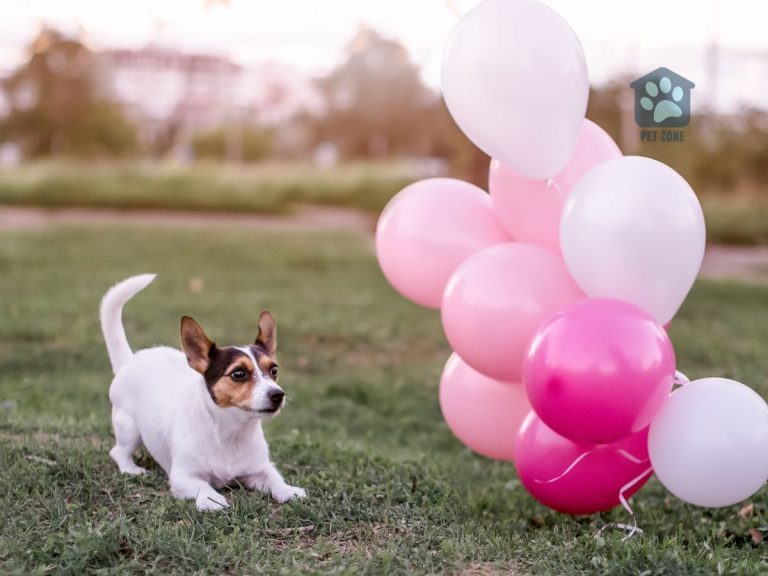
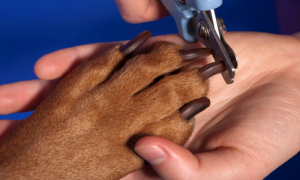
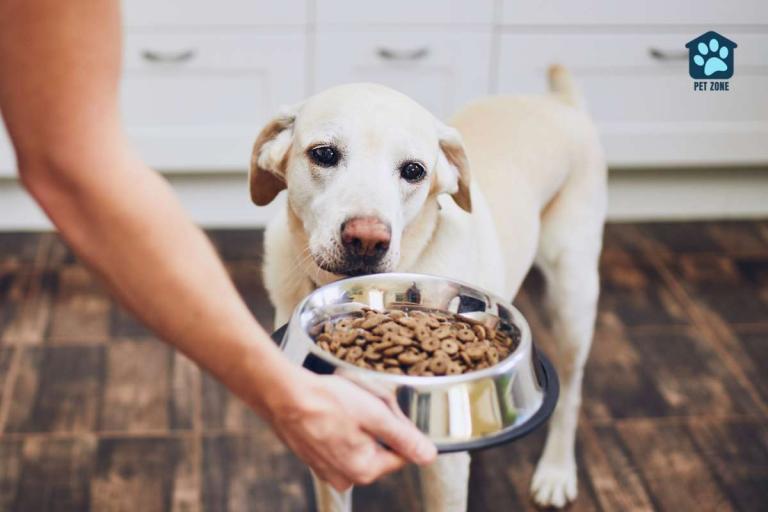
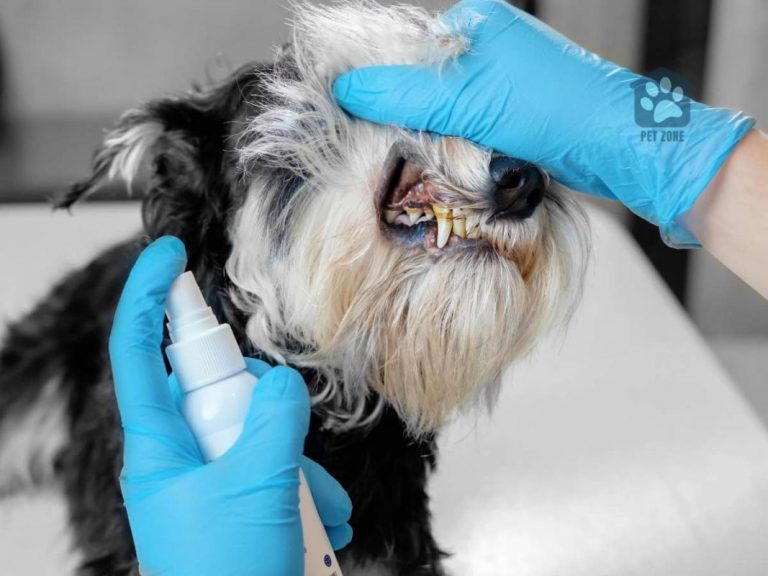
I love this comprehensive guide about how to groom your pets at home. You have provided a list of the essential products needed for pet grooming. We always have to groom one of our dogs at home because he just can’t go in the car. I’m always looking for tips to make the process easier for him.